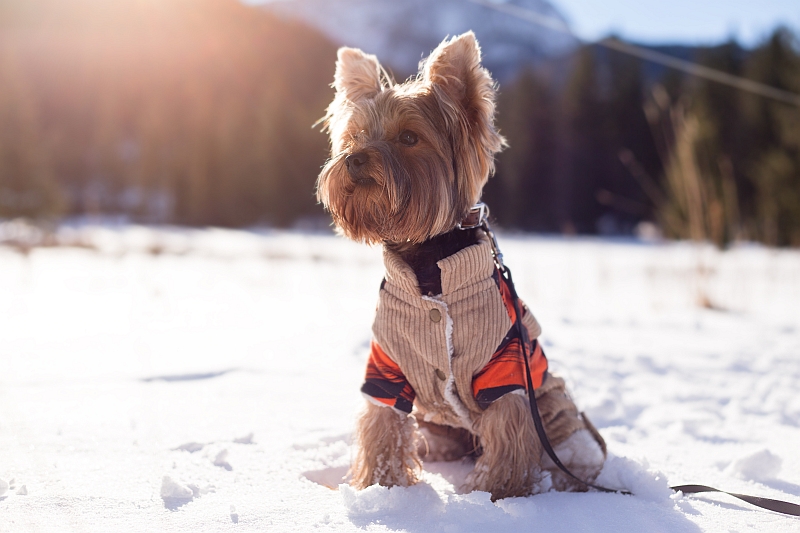[et_pb_section admin_label=”section”]
[et_pb_row admin_label=”row”]
[et_pb_column type=”4_4″][et_pb_text admin_label=”Text”]Dog owners always wonder about the wellbeing of their pet, and make sure that she gets the best medical care, the best food, and the best and most comfortable place to rest; however, some may neglect to consider the need for protecting their dog’s paws from the harshness of winter cold. It does not commonly occur to dog owners that their pampered pooch may need protection against snow and ice.
The real trouble arises in areas with heavy snow, where the cold is not the only problem—in areas where there are severe snow and ice on the road, local municipalities usually apply salt or de-icer (or both) to the affected areas of public roads, and these solutions can be harmful to your dog’s paws, causing burns. So how can you make sure that your pooch is well protected against not only the harsh cold of winter, but potential hazardous material which she may encounter during the cold season?
Balms: To help prevent drying, cracking, and even frostbite, one thing you can do is apply one of the many commercially available balms which are specifically developed for keeping paw pads healthy. An alternative to balm is petroleum jelly. Before applying the balm, make sure that your dog’s paws are clean, the hair on the paws shortened, and the nails are trimmed. The balm can only do so much, and it can only perform well if the paws are properly cared for. The balm should be applied before every walk in cold weather (especially in snow and ice), and upon returning from the walk, but after cleaning the paws with warm water (or damp cloth) in order to remove any ice snow from between the fingers and clumps on the hair.
Dog Boots: They may look silly, and sometimes make your dog walk a little funny, but dog boots can be an important tool in your arsenal against frostbite, and other hazards on winter roads. Dog boots can be purchased from many pet stores, and cover your dog’s paws and keep them a bit warm, and most importantly dry and away from the snow which can get stuck between the paw pads can cause discomfort and injury. You may need to put in some time to get your dog used to wearing the boots, as they may initially feel uncomfortable for your dog.
Watch Out for Salt & De-Icer: Winter roads, and sidewalks are salted and de-iced by local government as well as people around the neighborhood, and often times they can be toxic or harmful to dogs. While walking your dog, try to avoid salted sections of the street, or portions where de-icer has been applied. It is also important to prevent your dog from drinking from puddles during this time as the de-icer run-off can be fatally toxic to dogs. Whether or not your dog steps into salt or de-icer, you should wash or wipe your dog’s paws after each walk to make sure that any such residue is removed, and that no snow or ice stays lodged between the fingers and paw pads.[/et_pb_text][/et_pb_column]
[/et_pb_row]
[/et_pb_section]

